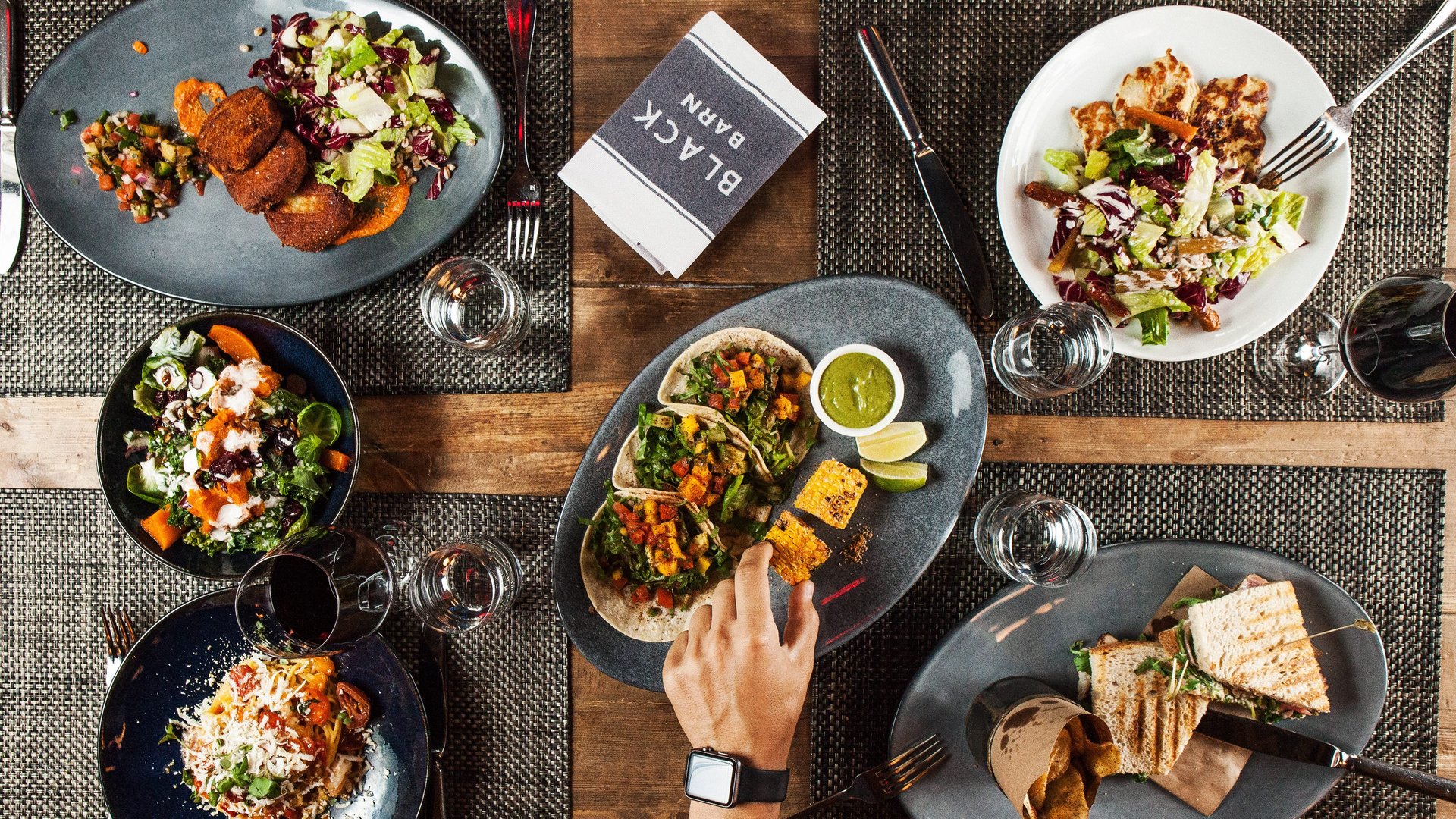Silicon Valley’s fetish for efficient food is moving on from Soylent to ruining the restaurant experience
In its endless—and sometimes absurd—quest for efficiency, one of the latest food apps funded by Silicon Valley investors is stripping away the enjoyment of dining out in exchange for the pleasure of the 15-minute lunch. The Allset app, which has raised more than $3.35 million in funds from venture firms Metamorphic Ventures, Andreessen Horowitz, FJ Labs, and others since its start in 2015, lets users book a table, order, and pay before ever getting to the restaurant.


In its endless—and sometimes absurd—quest for efficiency, one of the latest food apps funded by Silicon Valley investors is stripping away the enjoyment of dining out in exchange for the pleasure of the 15-minute lunch. The Allset app, which has raised more than $3.35 million in funds from venture firms Metamorphic Ventures, Andreessen Horowitz, FJ Labs, and others since its start in 2015, lets users book a table, order, and pay before ever getting to the restaurant.
It’s designed to make eating out as brief as possible, says Allset CEO and co-founder Stas Matviyenko. “We hated waiting at restaurants or eating on the street,” the CEO said referencing his four co-founders in the San Francisco Business Times. “You can spend an hour in the restaurant waiting but only 15 minutes for eating, so we thought it would be a great solution for restaurants and customers. We’re restaurant people and like dining in restaurants, but the only problem was waiting.”
Allset’s investors also see time spent away from the desk as “friction,” not a feature. “Allset provides strong benefits to both diners and restaurants while relieving significant friction from the dining experience on both sides of the table,” said Jeff Jordan, of Andreessen Horowitz and the former OpenTable CEO in a statement. “I use the service as a consumer and love the experience!”
The lunch-focused service (now expanding into brunch and dinner) says it has 100,000 users at more than 450 restaurants in six cities, including San Francisco, Palo Alto, Boston, and New York. Allset takes a 12% commission on bookings. The company plans to add a new city every month until it is nationwide. “We are trying to bring people back to restaurants and offer them the same great restaurant experience, but more seamless and wait-free,” said Dimitri Nikulin of Allset.
Of course, there’s no shortage of people wishing to eat out or buy help for the kitchen (as Silicon Valley has encouraged by pouring billions of dollars into food and delivery startups such as Blue Apron). In fact, the amount of money Americans spend eating out compared to groceries for the home has reached record highs, according to the USDA.
But the need to turn the restaurant into a take-out experience is a peculiarly American mentality. The country’s obsession with scarfing down its mid-day meal is nothing new; technology is just pushing it toward its logical conclusion with meal powders such as Soylent and apps like Allset.
Culinary historian Laura Shapiro says as far back as 1898, when New York City opened America’s first cafeteria, one could watch the “floods of men rushing from their offices, gobbling this meal at top speed, and rushing back to work.” Today, workers don’t even leave the building. Only one in five people step away for lunch while most eat at their desks, reports NPR. Professionals, especially, have seen working hours climb as time away from the desk dwindles—even golf courses are revamping to offer a more speedy product.
By contrast, lunches in countries like Italy, France and much of Europe are designed to do the opposite: put people at ease with conversation and collegiality. Dining with colleagues can unlock deals or spur ideas.
Kimberly Elsbach, a management professor at the University of California who studies workplace psychology, argues the quality, not the speed, of the interaction opens up possibilities. “People have creative thoughts and can work on problems in a less task-oriented environment,” Elsbach says. “They actually make progress on problems because they’re not under the stress of having to come up with something.”
Rushing meals also piles on pounds and stress. Americans already eat too fast, a factor in obesity and other health problems. A leisurely break from a hard workday increases creativity and allows people to perform more productively afterwards, says Shapiro. Google has even designed waiting times into its free meals to foster innovation and “serendipitous interaction” among employees.
Some users agree with Allset’s premise. “Using Allset was like the first time I used Uber–very convenient at first, a little weird getting up and leaving afterward, then thinking ‘Wow, this is how it should be,'” said John Haag, a San Francisco resident who works in finance, in an interview. “I was seated immediately upon arriving and received my order within 5-7 minutes of sitting down. After eating, I just got up and left.”
Others said it did not live up to its advertising, let alone improve the experience. “In our case it didn’t save much time,” said Chad Nitschke, a Bay Area entrepreneur. He said it shaved off a few minutes in food prep and payment, but “I personally don’t see the value, I’m more of a grab-and-go person and if I’m going to a sit down place I probably wouldn’t think to use Allset, especially in a group. … I wouldn’t expect to use it again.”